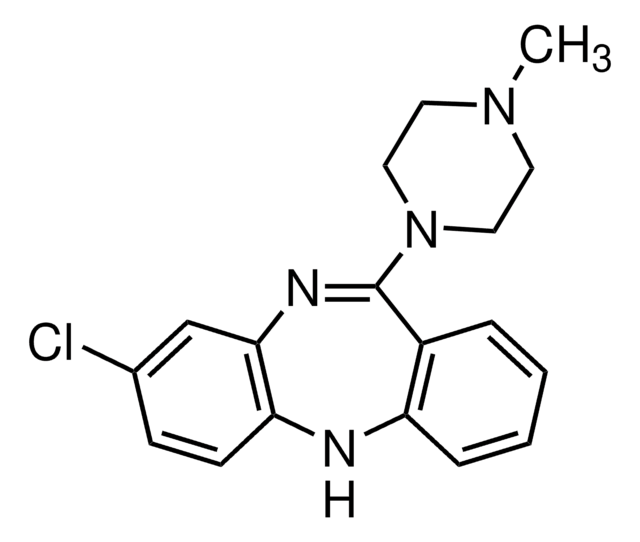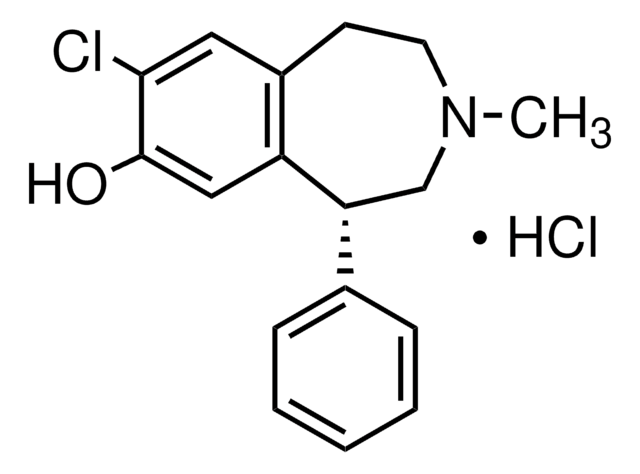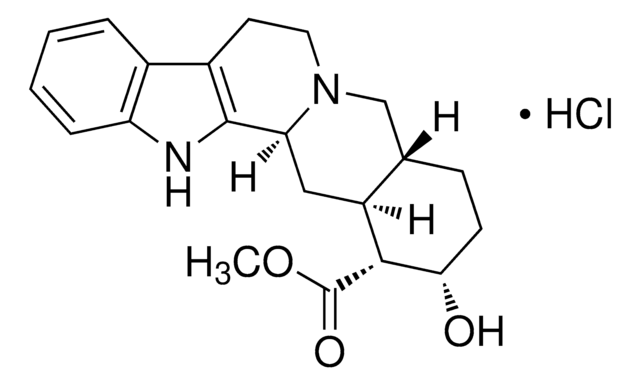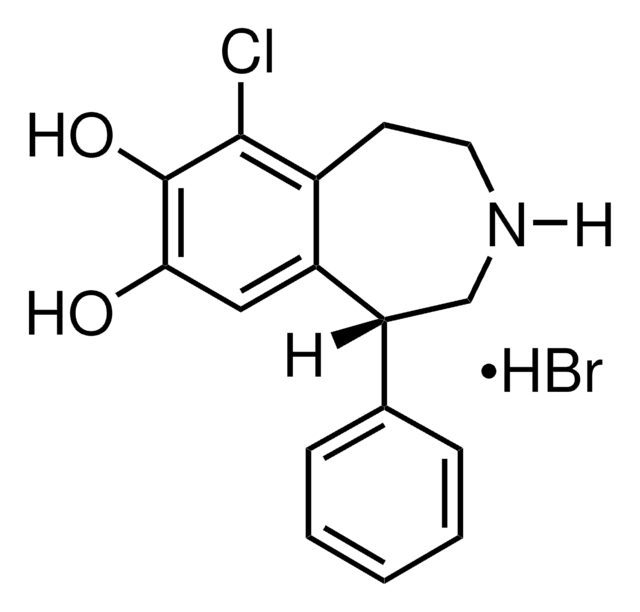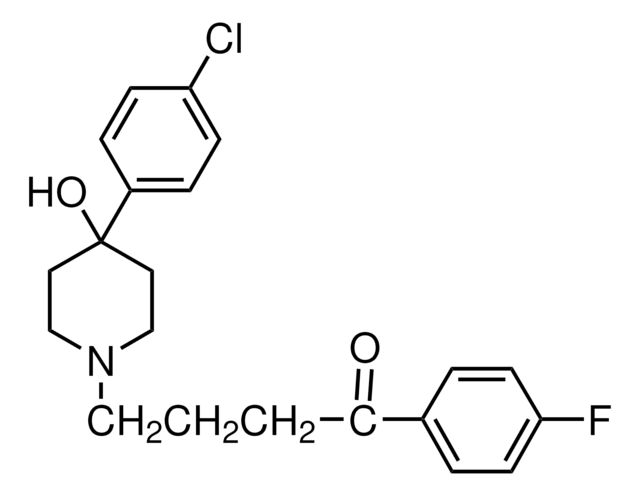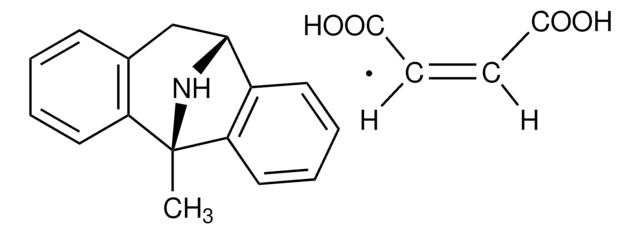All Photos(1)
Synonym(s):
(-)-trans-6,7,7a,8,9,13b-Hexahydro-3-chloro-2-hydroxy-N-methyl- 5H-benzo[d]naptho-(2,1-b)azepine hydrobromide, (6aS,13bR)-11-Chloro-6,6a,7,8,9,13b-hexahydro-7-methyl-5H-benzo[d]naphth[2,1-b]azepin-12-ol hydrobromide, (6aS-trans)-11-Chloro-6,6a,7,8,9,13b-hexahydro-7-methyl-5H-Benzo[d]naphth[2,1-b]azepin-12-ol hydrobromide, Ecopipam hydrobromide, PSYRX 101 hydrobromide, PSYRX-101 hydrobromide, PSYRX101 hydrobromide, SCH 39166 hydrobromide, SCH39166 hydrobromide
Empirical Formula (Hill Notation):
C19H20ClNO·HBr
CAS Number:
Molecular Weight:
394.73
MDL number:
UNSPSC Code:
12352200
NACRES:
NA.77
Recommended Products
Assay
≥98% (HPLC)
form
powder
storage condition
desiccated
color
white to beige
solubility
DMSO: 2 mg/mL, clear
storage temp.
2-8°C
Biochem/physiol Actions
SCH-39166 (ecopipam) is a high-affinity D1/D5 subtype-selective dopamine receptor antagonist (Ki = 1.2 nM/D1, 2.0 nM/D5, 980 nM/D2, 5.52 μM/D4, 80 nM/5-HT, 731 nM/α2a). SCH-39166 is widely employed both in cultures and in animal studies in vivo.
Certificates of Analysis (COA)
Search for Certificates of Analysis (COA) by entering the products Lot/Batch Number. Lot and Batch Numbers can be found on a product’s label following the words ‘Lot’ or ‘Batch’.
Already Own This Product?
Find documentation for the products that you have recently purchased in the Document Library.
Yunjin Lee et al.
Experimental neurobiology, 27(6), 539-549 (2019-01-15)
Autism spectrum disorder (ASD) is a heterogeneous group of neurobehavioral disorders characterized by the two core domains of behavioral deficits, including sociability deficits and stereotyped repetitive behaviors. It is not clear whether the core symptoms of ASD are produced by
Martin Clark et al.
Frontiers in cellular neuroscience, 12, 260-260 (2018-09-07)
The ventral pallidum (VP) is crucially involved in reward processing. Dopaminergic afferents reach the VP from the ventral tegmental area (VTA). Recent in vivo studies suggest dopamine application increase the firing in the VP. However, little is known about the
Nao Matsuyama et al.
Respiratory research, 19(1), 53-53 (2018-04-03)
Dopamine receptors comprise two subgroups, Gs protein-coupled “D1-like” receptors (D1, D5) and Gicoupled “D2-like” receptors (D2, D3, D4). In airways, both dopamine D1 and D2 receptors are expressed on airway smooth muscle and regulate airway smooth muscle force. However, functional
M A Tice et al.
Pharmacology, biochemistry, and behavior, 49(3), 567-571 (1994-11-01)
Characterization studies were conducted on the five cloned dopamine receptor subtypes (D1-D5) using the novel D1-selective antagonist, SCH 39166, as well as other related benzazepines and dopaminergic agents. The results demonstrate that SCH 39166 exhibits saturable, high-affinity binding to the
Furong Huang et al.
Investigative ophthalmology & visual science, 59(6), 2623-2634 (2018-05-31)
To determine the roles of dopamine D2 receptors (D2Rs) and dopamine D1 receptors (D1Rs) in the inhibition of form-deprivation myopia (FDM) by the nonselective dopamine agonist apomorphine (APO) in D2R-knockout (D2R-KO) and D1R-KO mice. Retinal layer thicknesses and electroretinograms (ERGs)
Our team of scientists has experience in all areas of research including Life Science, Material Science, Chemical Synthesis, Chromatography, Analytical and many others.
Contact Technical Service